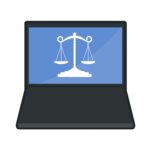 Computer Forensics
Computer Forensics
Computer forensics, also known as digital forensics, is the process of investigating and analyzing electronic data in order to uncover evidence of a crime, unauthorized activity, or other types of security incidents. This is achieved by collecting and analyzing electronic data from various devices such as computers, mobile phones, and digital storage media.
The process of computer forensics begins with the identification and preservation of digital evidence. The first step is to determine which devices or systems may have been involved in the incident and to secure them to prevent any tampering or alteration of the data. This is done by creating an exact copy of the device or system, known as a forensic image, which can be used for analysis without altering the original data.
Once the evidence has been secured, the forensic analysis can begin. This involves the examination and interpretation of the data to determine what happened, who was responsible, and how it was done. This can involve analyzing system logs, internet history, email correspondence, social media activity, and other forms of electronic data.
Computer forensics is a highly specialized field that requires a deep understanding of computer systems, data storage, and digital evidence. Forensic investigators use a variety of tools and techniques to extract and analyze data from electronic devices, including specialized software and hardware tools, data recovery techniques, and programming languages.
USB Device Usage
Detecting the use of USB devices during theft of digital data can be challenging, but there are some methods that can be used to identify suspicious activity:
- Monitor USB activity: Employers can use software tools to monitor USB activity on company computers and networks, which can track when USB devices are plugged in or removed, what files are copied, and other details.
- Check computer logs: Computer logs can be reviewed to identify any unusual activity, such as a large number of files being copied, or a USB device being connected during off-hours.
- Physical checks: Physical checks can be conducted to ensure that no unauthorized USB devices are plugged into company computers. This can involve visually inspecting computers for any foreign devices or using physical locks or seals to prevent USB devices from being connected.
- Employee interviews: Interviews with employees can be conducted to gather information about suspicious activity, such as a coworker carrying a USB device around or spending an unusual amount of time on their computer.
- Digital forensics: If a theft has occurred, digital forensics can be used to examine computer systems and USB devices to identify evidence of data theft or other suspicious activity.
It’s important to note that some employees may use tactics to evade detection, such as using portable software that runs directly from a USB device without leaving any trace on the computer. Therefore, it’s important for employers to have comprehensive policies and procedures in place to prevent data theft and to monitor and respond to any suspicious activity.
Internet Browsing History
During a computer forensic examination, the analysis of internet browsing history can provide valuable insights into the actions of a computer user. Internet browsing history refers to a log of websites visited, including the date and time of access, the duration of the visit, and any search queries made. By examining the browsing history, a computer forensic expert can identify websites that were visited, when they were visited, and how frequently they were accessed. This information can be used to establish a timeline of the user’s internet activity and potentially uncover evidence of illegal or unauthorized activity.
Internet browsing history can be particularly useful in cases of cybercrime, where it may be necessary to establish whether a suspect accessed certain websites or engaged in particular online activities. For example, browsing history analysis may be used to investigate cases of online harassment, identity theft, or intellectual property theft. It can also be used in cases of employee misconduct or inappropriate internet usage, such as accessing illegal or inappropriate websites during work hours.
In addition to its investigative value, internet browsing history analysis can also be used for compliance and regulatory purposes. Many companies and organizations are required to monitor and archive their employees’ internet activity to comply with legal or regulatory requirements. Analyzing internet browsing history can help identify any non-compliance issues and provide evidence of due diligence in meeting regulatory requirements.
Recent File Access, Usage and Copying
In a computer forensic examination, the analysis of recent file access and usage, as well as copying, can provide valuable insights into the actions of the user or users of the computer system. By examining file metadata, it is possible to determine when files were last accessed or modified, which can be particularly useful in cases where data theft or intellectual property violations are suspected.
Additionally, the analysis of file access logs and system logs can provide information about who accessed files and when. This can help identify potential suspects or witnesses, and can also provide a timeline of events that can be used to build a case.
The examination of copying activity can also be useful in cases where data theft is suspected. By analyzing data logs and file metadata, it is possible to determine if large amounts of data were copied or transferred to external storage devices, cloud services or network locations. This information can then be used to identify potential suspects or to determine the extent of the data breach.
In summary, the analysis of recent file access and usage, and copying activity can provide valuable evidence in a wide range of legal and regulatory investigations.